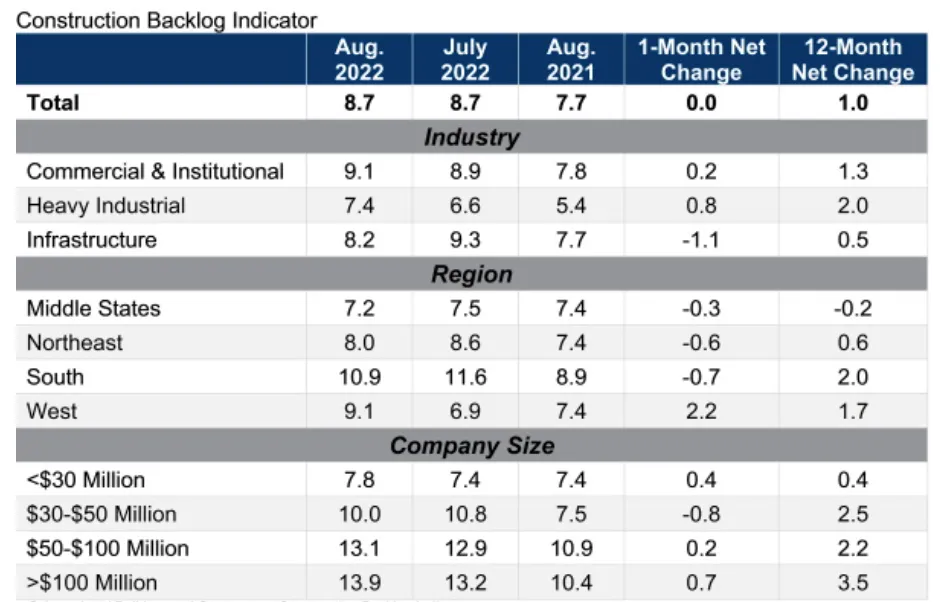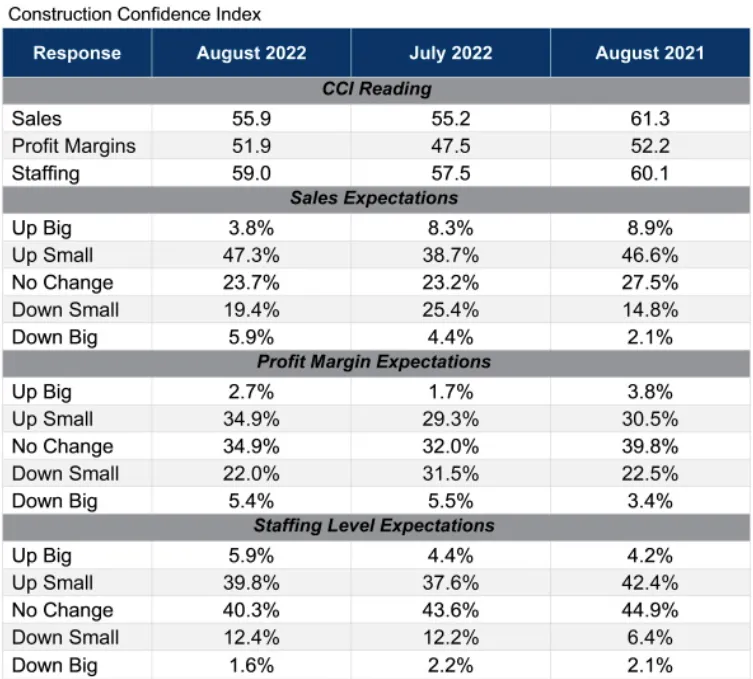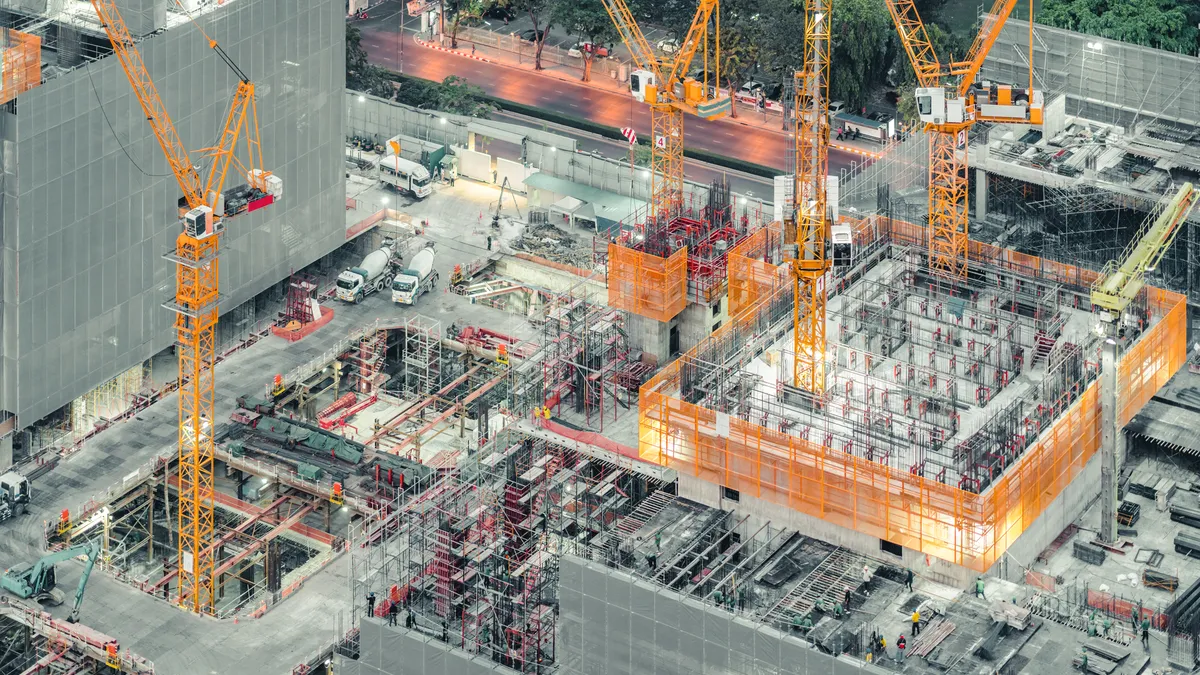Dive Brief:
- Nonresidential contractor confidence rose in August and backlog held steady as builders shook off fears of a looming recession, according to Associated Builders and Contractors, despite evidence the Federal Reserve will need to escalate its war on inflation even more via ever higher interest rates.
- The ABC’s Construction Backlog Indicator, which measures the months of work contractors have won but haven’t yet started, held at 8.7 months in August, the same level as July and a full month higher than August 2021. The sustained level came amid increases in the commercial and institutional sector, as well as heavy industrial projects, even as the bookings for infrastructure projects fell.
- The results helped buoy contractors’ optimism for sales, staffing — and most tellingly, profit margins — over the next six months, all of which rose from July’s reading, though they were still below year-ago levels. Profit expectations have been hampered this year by continued inflation and higher staffing costs.
Dive Insight:
“The buoyancy of the nation’s nonresidential construction marketplace is really quite remarkable,” said Anirban Basu, ABC’s chief economist, in a release. “Rising interest rates have already driven the single-family homebuilding market into recession, but brisk nonresidential activity continues.”

While backlog is still below its cyclical peak from early 2022, it has remained essentially flat in recent months, he said. That indicates a more steady environment for the sector than seen in residential construction, which has been hammered by rising mortgage rates.
The heightened expectations come as many nonresidential contractors are operating at capacity, Basu said. Principal challenges in the sector relate to supply-side issues like worker shortages, equipment delivery delays and elevated materials prices, as opposed to demand for their services, the typical hallmark of a weaker environment in the sector.

But that doesn’t mean nonresidential construction contractors can relax. Last week, planning activity saw a modest dip and growth in the Architectural Billings Index, another harbinger of future construction demand, slowed. But both remained in positive territory for the year.

The increasingly optimistic outlook among commercial construction contractors was reported on the same day August’s inflation report came in hotter than expected, tanking financial markets on Wall Street. The consumer price index unexpectedly rose 0.1% in August, and was up 8.3% for the year, despite a recent fall in fuel prices.
It’s one of the last broad economic indicators members of the Federal Reserve’s Open Markets Committee will see before their meeting later this month to consider further interest rate hikes. Economists were expecting CPI to shrink modestly for the month.













